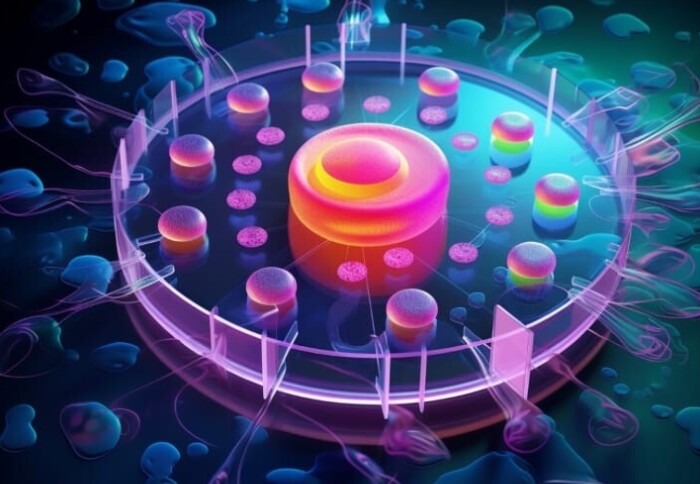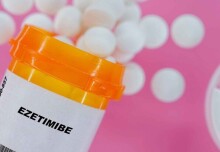
Artistic rendering of our hydrogel artificial cell

Researchers have engineered new types of synthetic cell particles capable of replicating the behaviours of living cellular systems.
These cells are designed to be capable of replicating key behaviours of living cells, including movement, communication, and response to environmental signals. This could impact on our understanding of cellular biology, and serve as a new type of biotechnology with medical and biomanufacturing applications.
Creating such life-like systems from molecular components is a key aim of synthetic biology, as it will enable scientists to develop cells with tailored functions that are easier to handle than biological cells.
The research - a collaboration between Department of Chemical Engineering and Department of Chemistry - is entitled ‘Biomimetic Behaviours in Hydrogel Artificial Cells through Embedded Organelles’ and was published in The Proceedings of the National Academy of Sciences (PNAS).
Mimicking biological complexity
In the field of synthetic biology, scientists use different building blocks to create structures known as artificial cells which mimic the behaviours of living organisms. One of the main aims within these field is to build an artificial cell which is as complex and sophisticated as a biological one.
Currently there are many different ways to build artificial cells, in the same way that cars can be made by different manufacturers using diverse processes. However, this diversity can lead to challenges when attempting to integrate components from one manufacturing method into another. Addressing this issue, the Imperial team have pioneered a new technology to produce artificial cells using components sourced from different manufacturing methods.
Through using a common artificial cell chassis, the team have been able to integrate different programmable subcomponents (called organelles) in different ways to perform specific functions. This is similar to how different biological cells have different organelles within them which perform specialist tasks. This approach allowed the team to build cells capable of exhibiting movement, release of cargo in response to biomolecules and communication with other cells present in the external environment.
First author Matthew Allen, PhD student with the Department of Chemical Engineering, stated: “Through taking inspiration from biology, we’ve developed a strategy to the next generation of more advanced cell mimics”.
Dr Yuval Elani, lead author and group leader of the Bioinspired Engineering Group, states:
This work is a key part of our wider efforts to bridge the living/non-living divide, to engineer cellular systems from inanimate chemical building blocks. Dr Yuval Elani Bioinspired Engineering Group, Department of Chemical Engineering
"This work is a key part of our wider efforts to bridge the living/non-living divide, to engineer cellular systems from inanimate chemical building blocks. Using this new approach, the technology has the potential to serve as the basis for a new type of biotechnology from onsite vaccine/drug production and delivery, production of new biomaterials and detection of diseased cells and tissues."
Developing an assembly line for designer cells
The team of researchers also focussed on producing the artificial cells through microfluidics, where they are able to produce these structures in large quantities, on a miniature production line.
Using this technology, the team can readily scale up the production to quantities needed to meet the demands of industrial and healthcare applications, which is a requirement to translate the technology from blue skies thinking to a concrete use.Towards the future
The team are now looking at using this artificial cell production method to create cells which have therapeutic relevance. For instance, cells which can sense a diseased stage, and the produce and release a drug at the site of interest.
In addition, the repertoire of building blocks the artificial cells can use is also being expanded. This will allow more complex artificial cells to be produced, further pushing the field towards its aim of mimicking a real cell.
The research was supported by UK Research and Innovation in partnership with the Institute for Chemical Biology and FabriCELL at Imperial College London.
Additional information
- Dr Yuval Elani, Associate Professor, Department of Chemical Engineering
- The Proceedings of the National Academy of Sciences (PNAS)
- UK Research and Innovation (UKRI)
- Institute of Chemical Biology
- FabriCELL at Imperial College London
Article text (excluding photos or graphics) © Imperial College London.
Photos and graphics subject to third party copyright used with permission or © Imperial College London.


